Abstract
Four fungal strains, namely, Aspergillus niger, Eurotium herbariorum, a Rhizopus sp., and non-aflatoxin (AF)-producing Aspergillus flavus, which could convert AF-B1 to aflatoxicol (AFL), could also reconvert AFL to AF-B1. The interconversion of AF-B1 to AFL and of AFL to AF-B1 was ascertained to occur during proliferation of the fungi. These reactions were distinctly observed in cell-free systems obtained from disrupted mycelia of A. flavus and the Rhizopus sp., but they were not observed in culture filtrates from intact (nondisrupted) mycelia of the same strains. The interconversion activities of AF-B1 and AFL were not observed when the cell-free systems were preheated at 100 degrees C. These findings strongly suggest that the interconversion of AF-B1 and AFL is mediated by intracellular enzymes of A. flavus and the Rhizopus sp. In addition, the isomerization of AFL-A to AFL-B observed in culture medium was also found to occur by the lowering of the culture pH.
Full text
PDF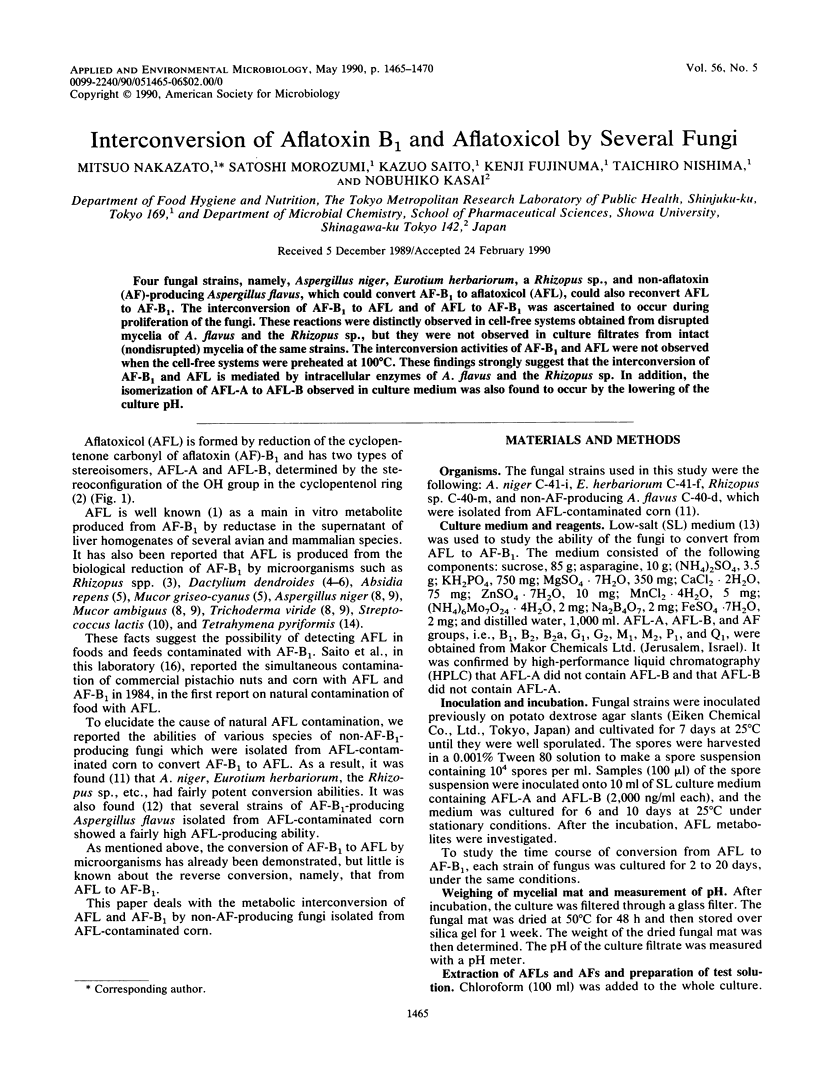
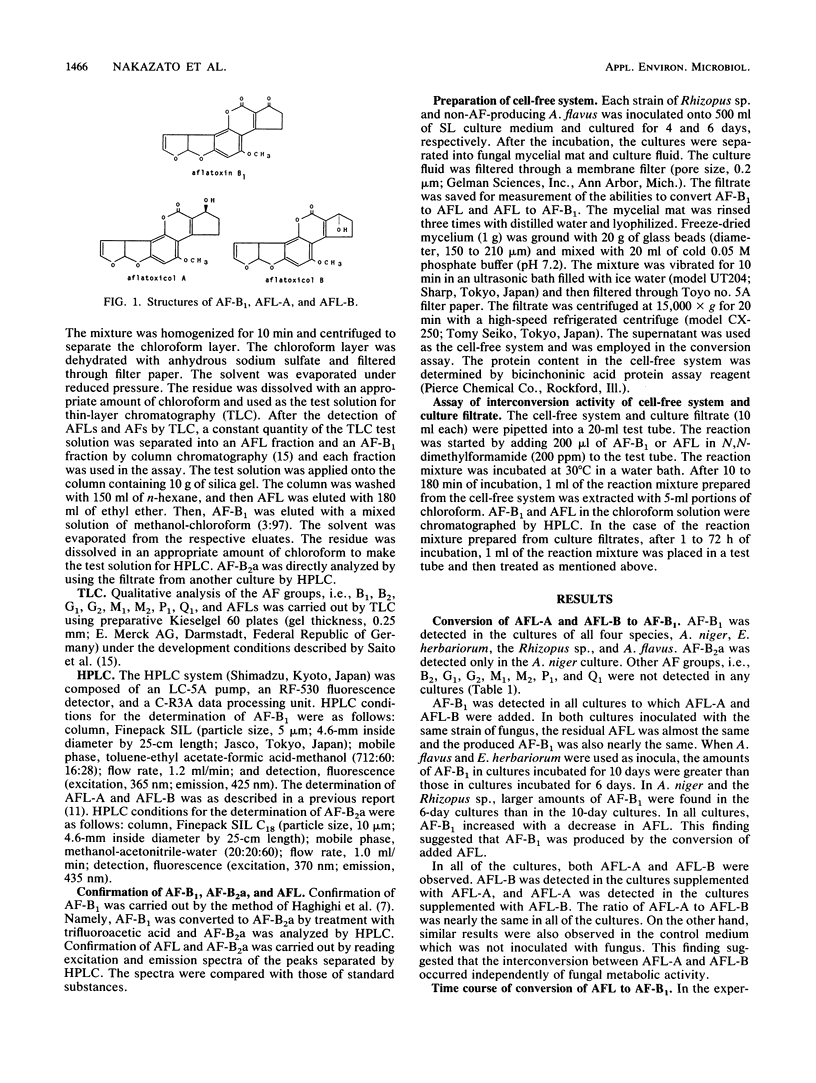
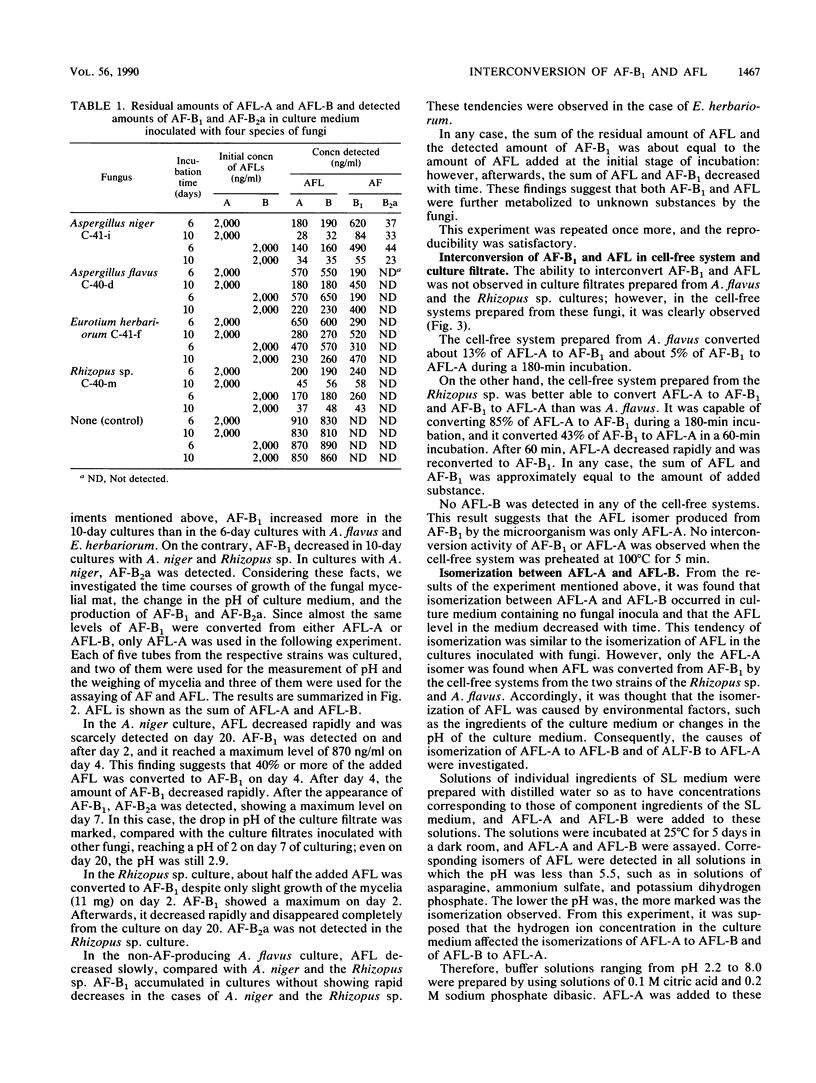
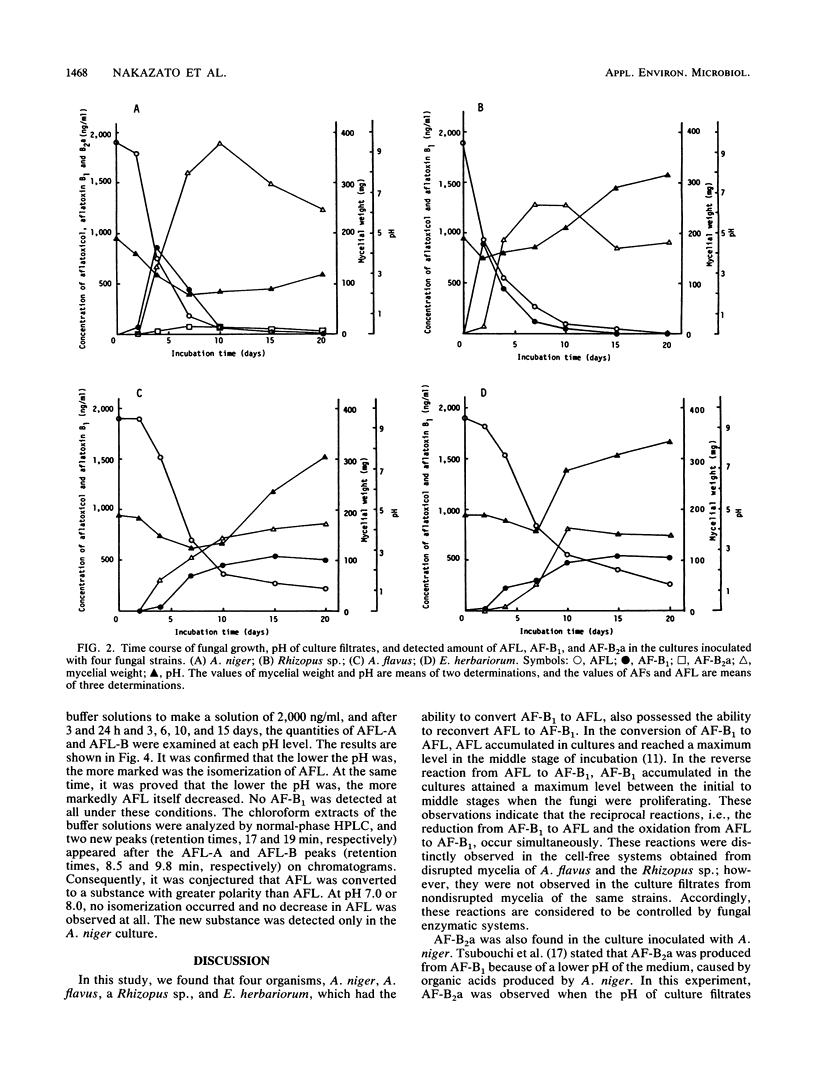
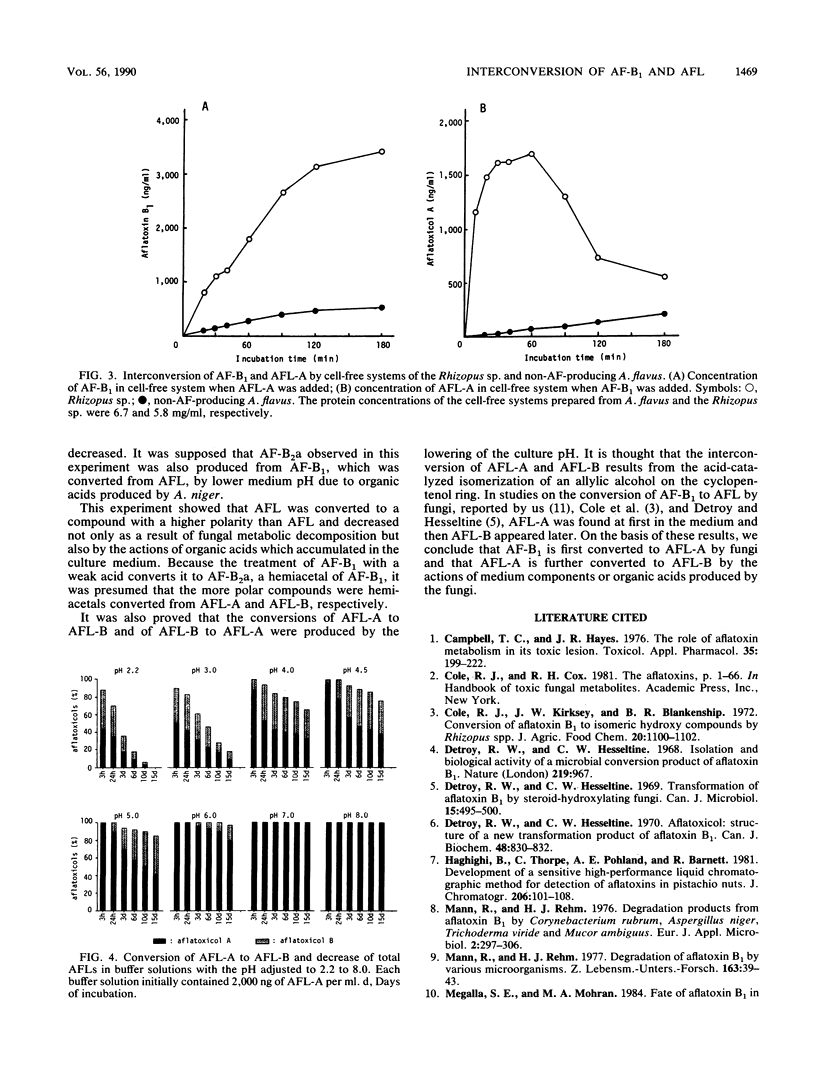
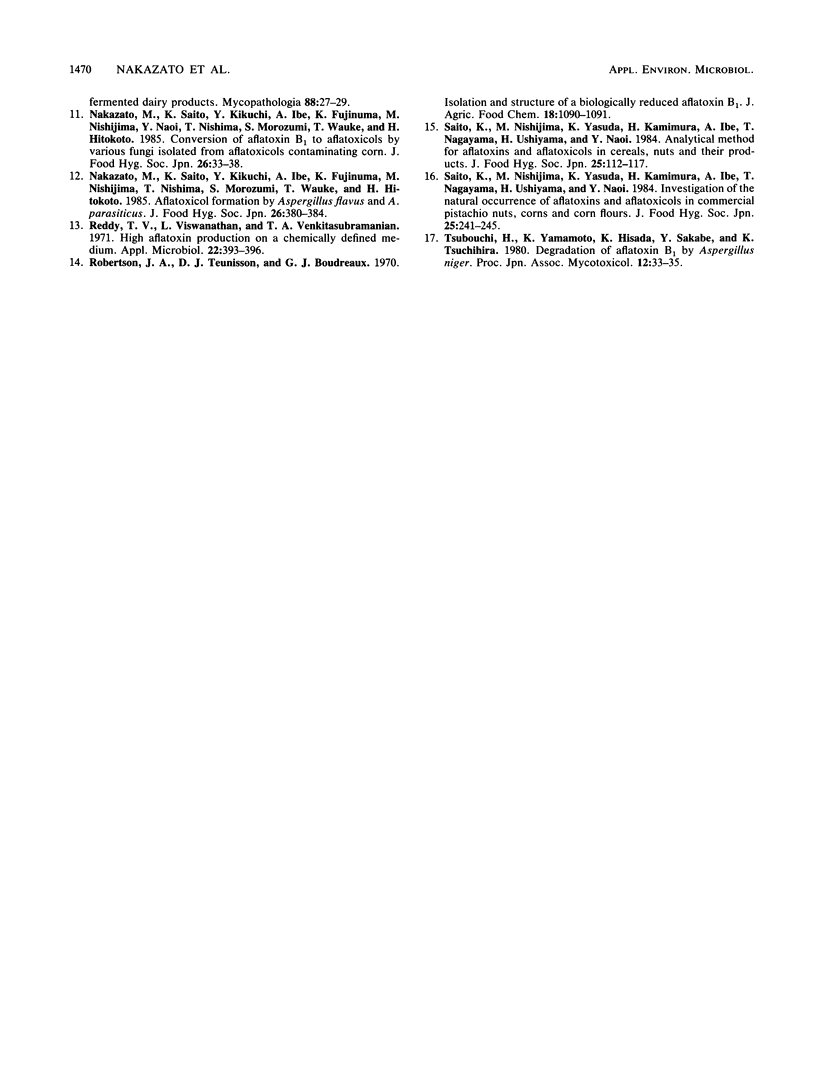
Selected References
These references are in PubMed. This may not be the complete list of references from this article.
- Campbell T. C., Hayes J. R. The role of aflatoxin metabolism in its toxic lesion. Toxicol Appl Pharmacol. 1976 Feb;35(2):199–222. doi: 10.1016/0041-008x(76)90282-9. [DOI] [PubMed] [Google Scholar]
- Cole R. J., Kirksey J. W., Blankenship B. R. Conversion of aflatoxin B 1 to isomeric hydroxy compounds by Rhizopus spp. J Agric Food Chem. 1972 Nov-Dec;20(6):1100–1102. doi: 10.1021/jf60184a040. [DOI] [PubMed] [Google Scholar]
- Detroy R. W., Hesseltine C. W. Aflatoxicol: structure of a new transformation product of aflatoxin B 1. Can J Biochem. 1970 Jul;48(7):830–832. doi: 10.1139/o70-130. [DOI] [PubMed] [Google Scholar]
- Detroy R. W., Hesseltine C. W. Isolation and biological activity of a microbial conversion product of aflatoxin B. Nature. 1968 Aug 31;219(5157):967–967. doi: 10.1038/219967a0. [DOI] [PubMed] [Google Scholar]
- Detroy R. W., Hesseltine C. W. Transformation of aflatoxin B1 by steroid-hydroxylating fungi. Can J Microbiol. 1969 Jun;15(6):495–500. doi: 10.1139/m69-086. [DOI] [PubMed] [Google Scholar]
- Haghighi B., Thorpe C., Pohland A. E., Barnett R. Development of a sensitive high-performance liquid chromatographic method for detection of aflatoxins in pistachio nuts. J Chromatogr. 1981 Feb 6;206(1):101–108. doi: 10.1016/s0021-9673(00)82609-6. [DOI] [PubMed] [Google Scholar]
- Mann R., Rehm H. J. Abbau von Aflatoxin B1 durch verschiedene Mikroorganismen. Z Lebensm Unters Forsch. 1977;163(1):39–43. doi: 10.1007/BF01123555. [DOI] [PubMed] [Google Scholar]
- Reddy T. V., Viswanathan L., Venkitasubramanian T. A. High aflatoxin production on a chemically defined medium. Appl Microbiol. 1971 Sep;22(3):393–396. doi: 10.1128/am.22.3.393-396.1971. [DOI] [PMC free article] [PubMed] [Google Scholar]
- Robertson J. A., Teunisson D. J., Boudreaux G. J. Isolation and structure of a biologically reduced aflatoxin B1. J Agric Food Chem. 1970 Nov-Dec;18(6):1090–1091. doi: 10.1021/jf60172a008. [DOI] [PubMed] [Google Scholar]


